What is electrical resistance and how does it depend on temperature
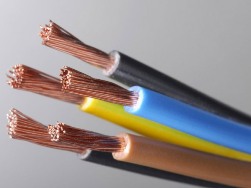 From the point of view of the electromagnetic process occurring in it, any element or section of an electric circuit is primarily characterized by the ability to conduct current or impede the passage of current. This property of the circuit elements is evaluated by their electrical conductivity or magnitude, reverse conductivity - electrical resistance.
From the point of view of the electromagnetic process occurring in it, any element or section of an electric circuit is primarily characterized by the ability to conduct current or impede the passage of current. This property of the circuit elements is evaluated by their electrical conductivity or magnitude, reverse conductivity - electrical resistance.
Most electrical devices consist of conductive parts made of metal conductors, usually provided with an insulating coating or sheath. The electrical resistance of a conductor depends on its geometrical dimensions and material properties. The resistivity and conductivity take into account the properties of the material of the conductor and give the values of resistance and conductivity of the conductor 1 m long and a cross-sectional area of 1 mm2. By the value of resistivity ρ, all materials can be divided ...
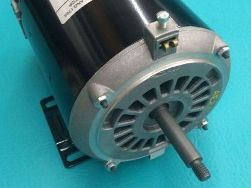 Depending on the purpose, on the expected operating modes and conditions, on the type of power supply, etc., all electric motors can be classified according to several parameters: by the principle of obtaining the operating moment, by the method of operation, by the nature of the supply current, by the method of phase control, by type of excitation, etc. Let us consider the classification of electric motors in more detail.
Depending on the purpose, on the expected operating modes and conditions, on the type of power supply, etc., all electric motors can be classified according to several parameters: by the principle of obtaining the operating moment, by the method of operation, by the nature of the supply current, by the method of phase control, by type of excitation, etc. Let us consider the classification of electric motors in more detail.
Torque in electric motors can be obtained in one of two ways: by the principle of magnetic hysteresis or purely magnetoelectric. A hysteresis motor receives torque through the hysteresis during magnetization reversal of a magnetically solid rotor, while in a magnetoelectric motor the torque is the result of the interaction of the explicit magnetic poles of the rotor and stator. Today, magnetoelectric motors rightfully constitute the lion's share of the total abundance of electric motors ...
What is inductive and capacitive load?
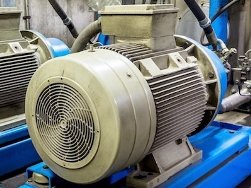 The terms "capacitive load" and "inductive load", as applied to alternating current circuits, imply a certain nature of the interaction of the consumer with an alternating voltage source.
The terms "capacitive load" and "inductive load", as applied to alternating current circuits, imply a certain nature of the interaction of the consumer with an alternating voltage source.
Roughly this can be illustrated by the following example: connecting a fully discharged capacitor to the outlet, at the first moment of time we will observe an almost short circuit, while connecting the inductor to the same outlet, at the first moment of time, the current through such a load will be almost zero. This is because the coil and capacitor interact with alternating current in fundamentally different ways, which is the key difference between inductive and capacitive loads. Speaking of capacitive load, they mean that it behaves in an AC circuit like a capacitor.This means that a sinusoidal alternating current will periodically recharge ...
Batch switch: what is it and what is it for
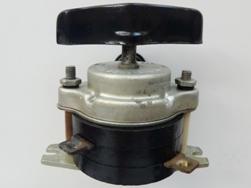 Batch switches are used for switching electrical circuits. At the same time, they can be used both in direct and alternating current circuits with voltage of 220, 380 V. However, people often confuse and, in the old fashion, call “circuit breakers” circuit breakers, which is fundamentally wrong. Therefore, let's understand what is and what are the need for package switches, as well as how they differ from circuit breakers?
Batch switches are used for switching electrical circuits. At the same time, they can be used both in direct and alternating current circuits with voltage of 220, 380 V. However, people often confuse and, in the old fashion, call “circuit breakers” circuit breakers, which is fundamentally wrong. Therefore, let's understand what is and what are the need for package switches, as well as how they differ from circuit breakers?
A packet switch is a switching device for turning on and off electric circuits, actually for the same purposes as circuit breakers. He got this name due to the fact that it consists of the same type of elements (packages) assembled on the same axis and secured with pins.Thus, in production from the same parts you can assemble a switching device with any number of poles (contact groups). They are characterized by a rotary movement of the handle device ...
The device and principle of operation of the circuit breaker
 For an electrician, switching equipment is one of the main devices that you have to work with. Circuit breakers carry both switching and protective role. Not a single modern electrical panel can do without automatic machines. In this article we will look at how a circuit breaker is designed and operated.
For an electrician, switching equipment is one of the main devices that you have to work with. Circuit breakers carry both switching and protective role. Not a single modern electrical panel can do without automatic machines. In this article we will look at how a circuit breaker is designed and operated.
A circuit breaker is a switching device designed to protect cables from critical currents. This is necessary in order to avoid damage to the conductive conductors of wires and cables in case of interphase faults and earth faults. The main task of the circuit breaker is to protect the cable line from the effects of short circuit currents. The main characteristics of circuit breakers are: rated current (insert a series of currents), switching voltage, time current characteristic ...
Three phase power supply system
 One of the options for a multiphase power supply system is a three-phase AC system. It has three harmonic EMFs of the same frequency, created by one common voltage source. The EMF data is shifted relative to each other in time (in phase) by the same phase angle equal to 120 degrees or 2 * pi / 3 radians.
One of the options for a multiphase power supply system is a three-phase AC system. It has three harmonic EMFs of the same frequency, created by one common voltage source. The EMF data is shifted relative to each other in time (in phase) by the same phase angle equal to 120 degrees or 2 * pi / 3 radians.
The first inventor of the six-wire three-phase system was Nikola Tesla, however, the Russian physicist-inventor Mikhail Osipovich Dolivo-Dobrovolsky made a significant contribution to its development, proposing to use only three or four wires, which gave significant advantages, and was clearly demonstrated in experiments with asynchronous electric motors. In a three-phase AC system, each sinusoidal EMF is in its own phase, participating in a continuous periodic process of electrification of the network, therefore the EMF data is sometimes referred to simply as “phases” ...
How voltage is converted to current
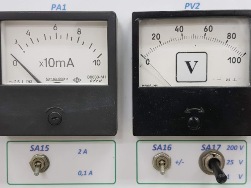 It is impossible to turn current into voltage or voltage into current, since these are fundamentally different phenomena. Voltage is measured at the ends of a conductor or an EMF source, while current is an electric charge moving through a cross section of a conductor. Voltage or current can only be converted into voltage or current of a different magnitude, in this case they talk about the conversion of electrical energy (power).
It is impossible to turn current into voltage or voltage into current, since these are fundamentally different phenomena. Voltage is measured at the ends of a conductor or an EMF source, while current is an electric charge moving through a cross section of a conductor. Voltage or current can only be converted into voltage or current of a different magnitude, in this case they talk about the conversion of electrical energy (power).
If the voltage decreases during the conversion of electrical energy, then the current rises, and if the voltage rises, then the current decreases. The amount of energy at the input and output will be approximately the same (minus, of course, the loss in the conversion process) in accordance with the law of conservation of energy. This is because the electrical energy A is originally the potential energy of an electric charge ...
Thermal action of current, current density and their influence on the heating of conductors
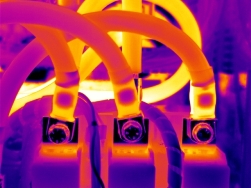 By the thermal action of an electric current is understood the release of thermal energy during the passage of current through a conductor. When a current passes through the conductor, the free electrons forming the current collide with the ions and atoms of the conductor, heating it.
By the thermal action of an electric current is understood the release of thermal energy during the passage of current through a conductor. When a current passes through the conductor, the free electrons forming the current collide with the ions and atoms of the conductor, heating it.
The amount of heat released in this case can be determined using the Joule-Lenz law, which is formulated as follows: the amount of heat released when an electric current passes through a conductor is equal to the product of the squared current, the resistance of this conductor and the time it takes for the current to pass through the conductor. Taking the current in amperes, the resistance in ohms, and the time in seconds, we get the amount of heat in joules.And given that the product of the current and resistance are the voltage, and the product of the voltage and current is the power, it turns out that the amount of heat released in this case is equal to the amount of electrical energy transferred to this conductor ...
